February 19th saw the trainees’ first big trip outside of Cambridge. After a few last-minute stresses of buses not turning up, and failing to remember that the trip was actually happening, we successfully made it onto the train to Norwich. The excitement caused by spotting some pigs out of the window set the tone for what was going to be a packed but extremely enjoyable day.
Once we disembarked our (obviously delayed) train, the next challenge was locating our first stop: the American Library found within the Norfolk and Norwich Millennium Library. What we had neglected to realise was that a) the library itself is actually in a multi-purpose building called The Forum, and b) it was half-term. Once we discovered that we actually were in the right place, despite a multitude of children running around for a science festival, we made our way to the American Library where we were met by the Librarian.
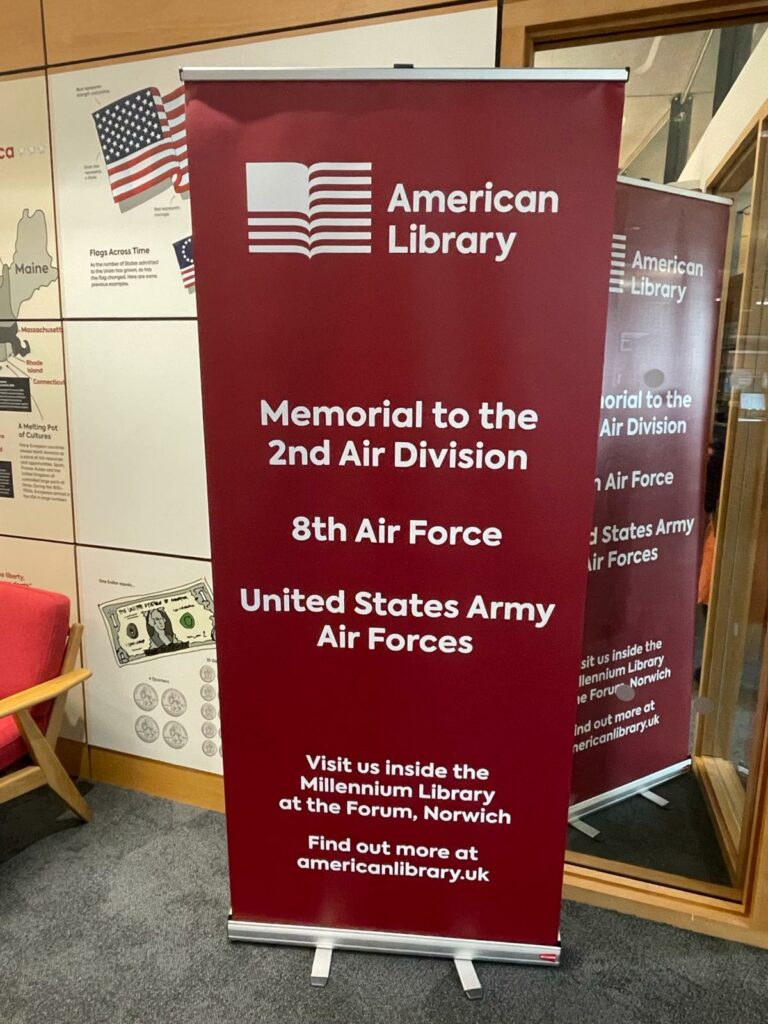
The Librarian explained that the American Library is the only public war memorial library in the UK, and is dedicated to the Second Air Division of the United States army who were based in East Anglia during WW2. It is intended to act as a ‘living memorial’, and so features several images and information panels to teach people about the history, as well as acting as a functioning library. The collection includes general American literature and books specifically about the history of the Second Air Division. There are also several self-published items which means that there are more ‘reference only’ copies than you may expect to find in a traditional library, as these books are often unavailable to purchase elsewhere. There is additionally a small collection of DVDs and VHS tapes, and other non-printed material such as memoirs and photographs is kept in a separate archives in the Norfolk Records Office. Impressively, thanks to funds from a legacy donation, 96% of these archives have been digitised!
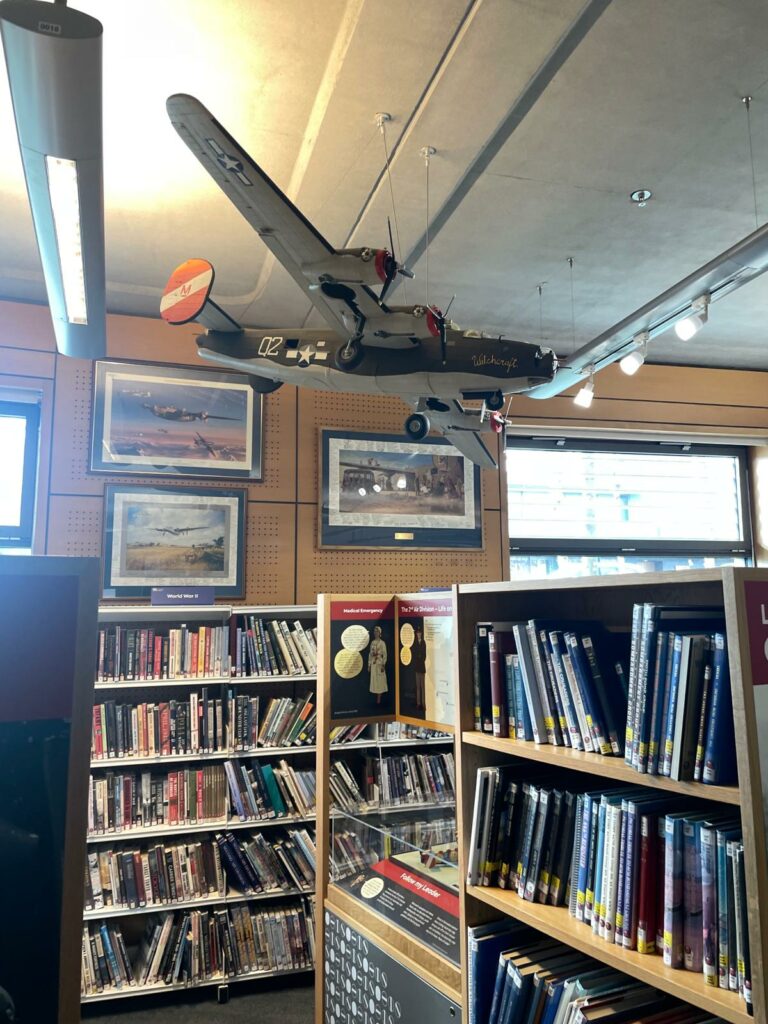
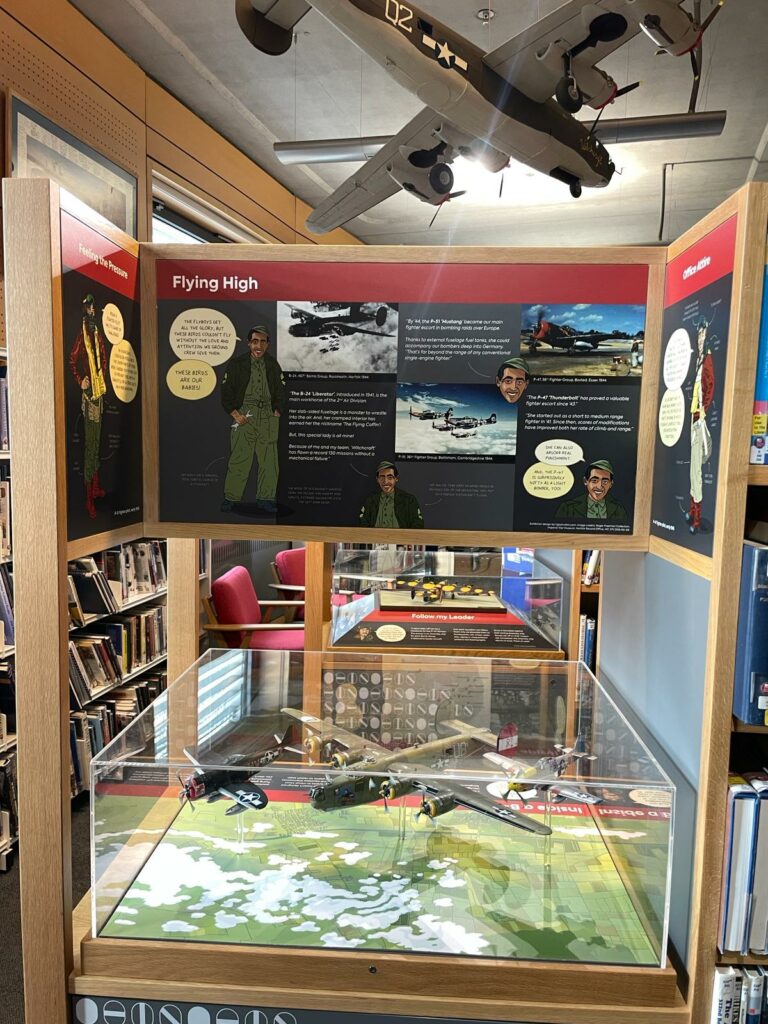
The American Library is classified according to the Dewey Decimal system, though, as the Librarian pointed out, using a system which classifies by topic can cause some confusion in a collection when the majority of the books are about the same thing! Therefore, they also arrange books by extra criteria such as the unit history or number of fighter group. To make everything simpler to find, the signage around the library refers to what the books are about, rather than classification numbers as you may expect to see on the shelves of a library. This user-friendly approach is also seen elsewhere: the shelves are all on wheels so the library can be reconfigured for events and the Librarian revealed that they have given out quizzes to people on aspects of the library in order to try and make it seem less intimidating. Finally, we were informed about an exciting pilot project that the library is a part of which uses AI to transcribe archival material. One difficulty with digitally searching archives is that if you were to search for a name, for example, a photograph containing that person may not come up in the results. Therefore, using AI to transcribe handwritten notes or documents means that the material is easier to navigate for users. Whilst the data still needs to be checked by humans – AI can often generate ‘hallucinations’ – this process is still much quicker than if it was all done by people.
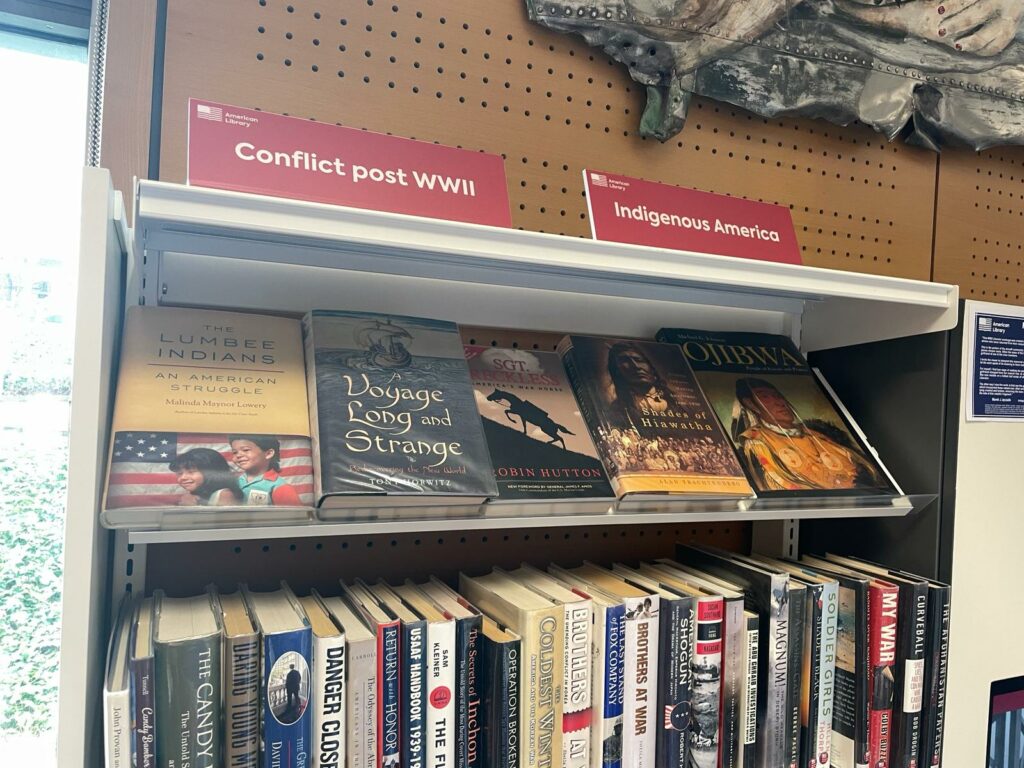
After the American Library, the Librarian took us around the rest of the Millennium Library, which is one of the largest public libraries in the UK. Additionally, it is one of 47 branches across Norfolk which are on 5 mobile routes, so books can be sent between libraries. We were first taken through the Early Years Library which, given the aforementioned half-term, was a little louder and more chaotic than most of us are used to in our own libraries (though, the décor and cuddly toys were definite positives)! As well as acting as a library, they also offer events for children such as Bounce and Rhyme, and Lego Club, keeping the overall sense of the Millennium Library being a community space. This is also seen through the fact that the library opens out to the rest of The Forum, meaning that it does not feel like a separate, closed space, though this does apparently lend itself to several noise complaints! We were then brought up to the first floor which houses around 250,000 books. Again, there are efforts to increase the community aspect of the library such as through a Zine Library with a monthly club. The Millennium Library is also an Open Library, meaning that the public are able to access it when it is unstaffed. 43 of the 47 Norfolk libraries are Open Libraries, showing how important it seems to be to have these spaces accessible for when people need them.
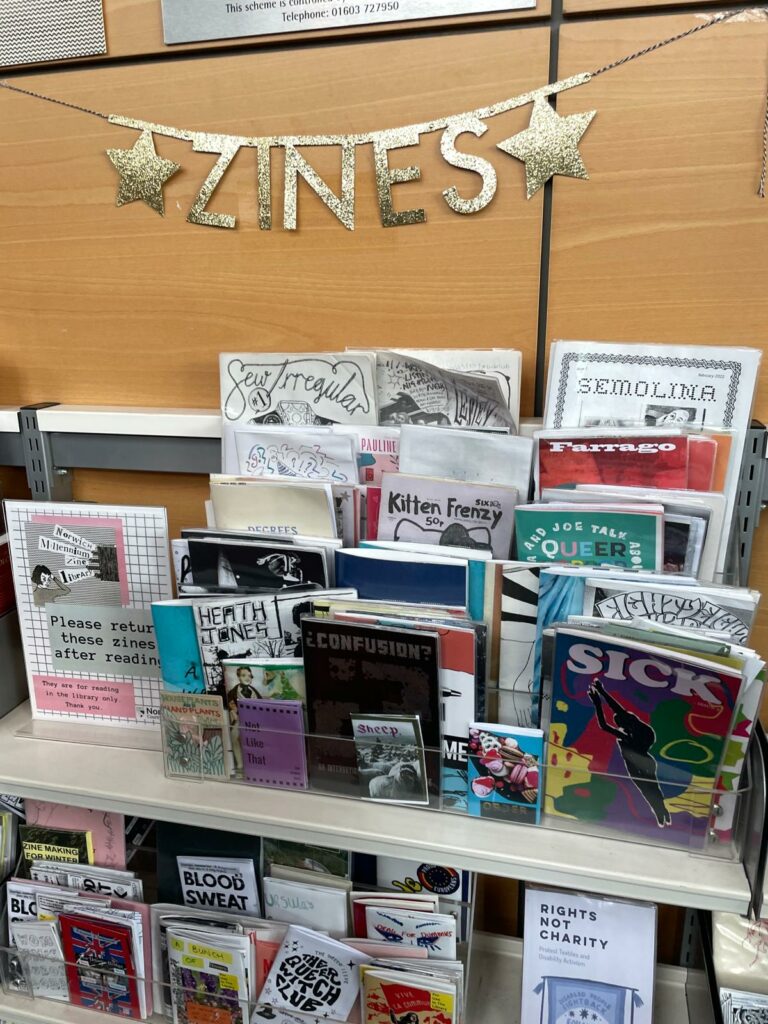
I’ll now hand over to Zia for Part 2!
